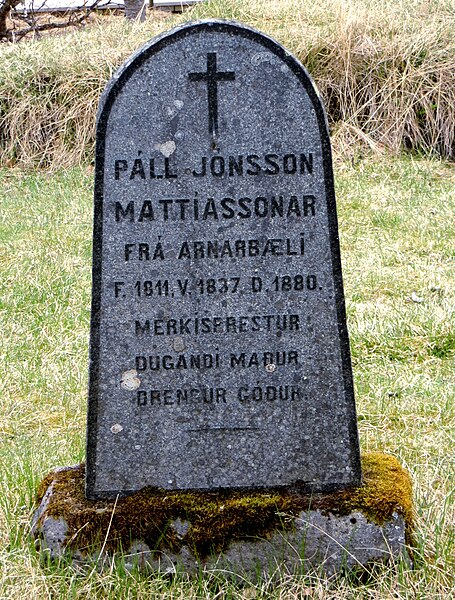Icelandic names are names used by people from Iceland. Icelandic surnames are different from most other naming systems in the modern Western world in that they are patronymic or occasionally matronymic: they indicate the father of the child and not the historic family lineage. Iceland shares a common cultural heritage with the Scandinavian countries of Denmark, Norway, and Sweden. Unlike these countries, Icelanders have continued to use their traditional name system, which was formerly used in most of Northern Europe. The Icelandic system is thus not based on family names. Generally, with few exceptions, a person's last name indicates the first name of their father (patronymic) or in some cases mother (matronymic) in the genitive, followed by -son ("son") or -dóttir ("daughter").
A gravestone with a patronymic and avonymic: "Páll, son of Jón, son of Mattías"
The Icelandic orthography uses a Latin-script alphabet including some letters duplicated with acute accents; in addition, it includes the letter eth, transliterated as ⟨d⟩, and the runic letter thorn, transliterated as ⟨th⟩ ; ⟨æ⟩ and ⟨ö⟩ are considered letters in their own right and not a ligature or diacritical version of their respective letters. Icelanders call the ten extra letters, especially thorn and eth, séríslenskur, although they are not. Eth is also used in Faroese and Elfdalian, and while thorn is no longer used in any other living language, it was used in many historical languages, including Old English. Icelandic words never start with ⟨ð⟩, which means the capital version ⟨Ð⟩ is mainly just used when words are spelled using all capitals.
A handwriting extract; the Icelandic letters ⟨ð⟩ & ⟨þ⟩ are visible.


